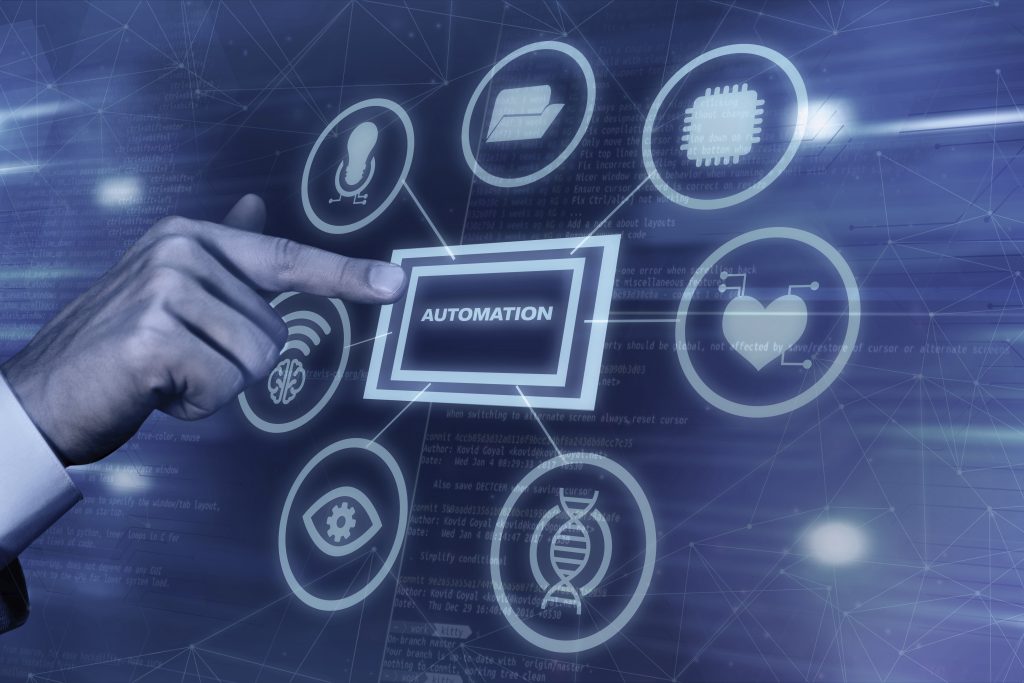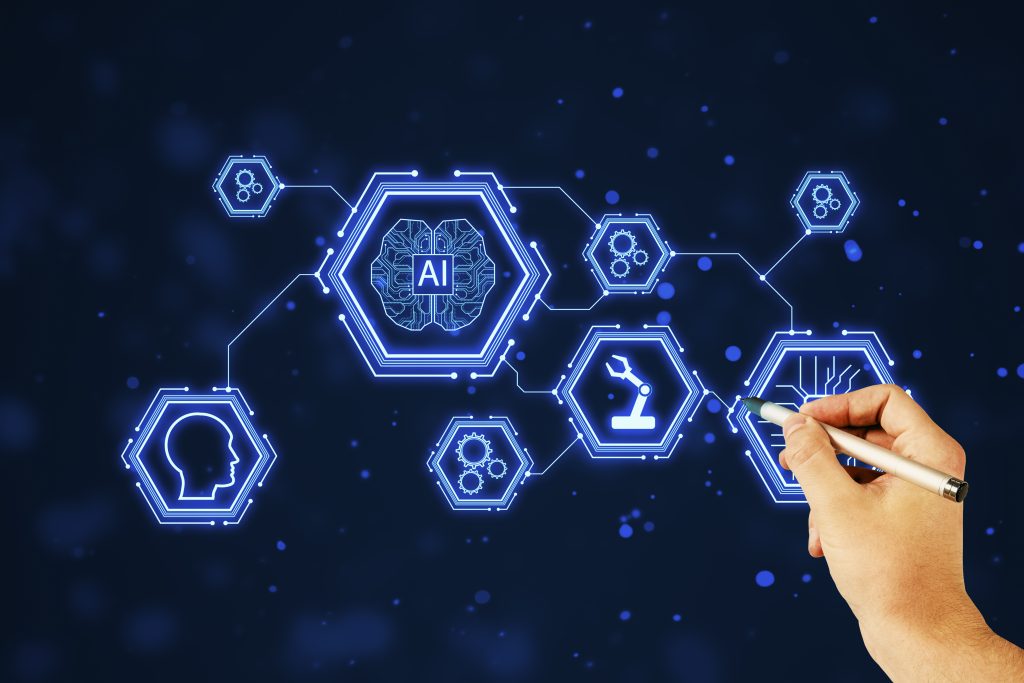What Is AI Workflow Automation: Benefits, Tips & Challenges
- July 7, 2025
- Gurupritsingh Saini
- IT Technology

Introduction to AI Workflows
AI workflows aren’t just for large enterprises with advanced research teams and a huge workforce. They’re becoming a standard part of everyday business operations. Whether you’re in marketing, HR, customer service, or operations, chances are you’ve already encountered some form of AI-driven automation.
Whether it was a chatbot routing a support ticket or an algorithm nudging an email sequence, that was part of a bigger flow, an AI workflow quietly doing its thing.
Take JPMorgan Chase’s COiN platform, for example. It handles things like interpreting loan contracts and pulls off what used to take humans forever. We’re talking about reviewing 12,000 contracts a year and saving legal teams around 360,000 hours.
Whether you’re in marketing, operations, customer support, or HR, AI workflow automation is likely already playing a role in how things run behind the scenes.
In this blog, we’ll break down:
- What AI workflow automation actually means
- The core components that power it
- Popular tools to build these workflows
- Real-world use cases across departments
- The benefits and challenges you should be aware of
- How to get started with your first automation
So if you’ve ever felt buried under repetitive tasks or wondered how businesses “magically” run smoother, this one’s for you.
Call us now!
Boost your digital presence with our expert.
What is AI Workflow Automation?

So, first things first!
AI workflow automation is basically setting up a series of tasks that machines (read: AI) can handle without your daily micromanaging. You define steps—like inputting data, making decisions, triggering actions—and AI runs them.
In law and insurance, tasks that used to eat up hours—like combing through case files or policies—can now be done in seconds. Over in healthcare, AI is helping doctors make faster diagnoses and untangle admin chaos.
Bottom line?
No matter the industry, AI workflow automation has something useful to offer.
AI workflows handle repetitive tasks on your behalf—whether it’s data scraping or managing hiring steps—so you can focus on more important work without constantly switching tabs or chasing follow-ups.
It’s not magic. It’s logic, code, and some clever integrations. You feed the machine data, and the AI workflow tools follow a set of instructions (often with a little decision-making power) to keep things moving.
Components of AI Workflow Automation
Each part of an AI workflow plays a specific role in making the automation run efficiently. Here’s a simplified breakdown of the vital components:
APIs
APIs allow different systems to communicate and share data. In AI workflows, they connect tools, platforms, and models so everything works together without manual input.
Business Process Automation (BPA)
Business Process Automation, or BPA, takes care of those repetitive, rule-based tasks. It could include data entry, approvals, or sending notifications. Why spend valuable time on work that could easily be automated? By making the management of these jobs a breeze, BPA streamlines operations while also freeing people up to focus on high-value and impactful tasks.
Generative AI
Generative AI is all about creating new content—whether it’s text, code, or summaries—based on specific prompts. Have you ever wished you didn’t have to draft every email or write every report from scratch? With generative AI, workflows can be turbocharged: it can draft emails, generate reports, or even fill out documents automatically, making content creation faster and easier than ever.
Intelligent Automation
Combines traditional automation with AI decision-making. It enables systems to make choices, like categorising tickets based on priority or routing issues to the right team without human help.
Machine Learning
Machine learning involves using past data to find trends and patterns, which can then be used to predict future outcomes or offer useful suggestions. This is especially valuable in areas such as detecting fraudulent activity, ranking sales leads, or forecasting inventory needs.
Natural Language Processing (NLP)
NLP enables systems to understand and process human language. In workflows, it’s used to extract meaning from emails, customer messages, or documents and trigger appropriate actions.
Optical Character Recognition (OCR)
OCR reads text from scanned images or PDFs and turns it into data your systems can actually use. It is handy in workflows for extracting information from invoices, forms, or even handwritten notes with no need to type everything out by hand.
Call us now!
Boost your digital presence with our expert.
AI Workflow Tools
Frankly speaking, there are a multitude of tools available. It’s like trying to pick a streaming service in 2025. But only a few do stand out.
- Zapier (with AI add-ons): Yes, it’s still around and smarter than ever. Great for connecting apps with some true AI action in the middle.
- Make (formerly Integromat): Pretty much a Zapier with a bit more muscle.
- UiPath: Primarily for robotic process automation but now with AI superpowers.
- Microsoft Power Automate: Works well for teams already buried in the Microsoft ecosystem.
- n8n: Open-source and getting increasingly friendly with AI models.
- Workato: Enterprise-friendly with plenty of AI integrations.
Now, do you need ALL of them?
The answer is No.
Pick one that aligns with your current stack and doesn’t require deep technical skills to get started.
AI Workflow Use Cases
This is where it gets fun. AI workflows can slide into places you didn’t even expect.
- Lead Qualification
AI workflows can score incoming leads based on behavior, source, or fit, prioritize high-value ones, and route them to sales—no manual sorting required. - Invoice Processing
Automatically extract details from invoices, categorize them accurately, and send the data to your accounting tools—speeding up reconciliation. - Recruitment
Screen resumes, auto-schedule interviews, and send follow-ups without clogging inboxes or relying on multiple tools. - Customer Support
AI can triage tickets, suggest context-specific replies, and resolve common issues instantly, reducing wait times and pressure on agents. - Marketing Automation
Segment audiences, personalize emails, optimize send times, and track engagement in real-time—no extra clicks needed. - Data Cleaning
Identify duplicates, fix inconsistent entries, and apply formatting rules across your datasets, so your reports are always based on clean data. - Dynamic Pricing
Use real-time data to adjust product or service pricing based on demand, competition, or inventory—no spreadsheets or guesswork. - Predictive Analytics
Analyze patterns in customer behavior, sales, or usage trends to forecast outcomes and make smarter decisions ahead of time. - Sales & Upselling
Recommend relevant products or services based on customer history or preferences, helping your sales team close more deals with better timing.
Honestly, if a task involves predictable steps and enough data, you can probably build an AI workflow around it.
Call us now!
Boost your digital presence with our expert.
Benefits of AI Workflow Automation Tools

Frankly speaking, the benefits are many! AI workflows don’t just save time, they help teams get more done with fewer roadblocks. From reducing manual errors to keeping processes consistent, AI workflow automation tools beat every bottleneck. In other words, they make everyday operations smoother and faster.
- Time savings: You’ll finally stop drowning in repetitive tasks.
- Consistency: No more “Oops, I forgot to send that follow-up” moments.
- Speed: Machines don’t need coffee breaks or office gossip.
- Scalability: Whether it’s 10 or 10,000 emails, the workflow doesn’t blink.
- Data accuracy: Fewer human typos and cleaner records.
When the boring stuff runs on autopilot, you get to spend your brain cells on the juicy problems. You know, the stuff that actually needs human thinking.
Challenges of AI Workflows
Before you dive into building AI workflows with full enthusiasm, there are a few challenges worth calling out. Setting things up isn’t always instant, some tools require configuration, training, and a solid understanding of your process before they actually start delivering results.
- Messy data: If your data’s a mess, the results won’t be any better. Cleaning up your data first is essential because automated systems can’t fix sloppy inputs.
- Over-automation: Some tasks need human judgment. Automating everything, especially decisions that require nuance, can backfire.
- Too many tools: Juggling too many platforms leads to confusion and headaches. It’s easy to get overwhelmed and tangled in integration issues.
- Ongoing upkeep: Systems aren’t “set and forget.” APIs get updated, data formats shift, and workflows can break—someone needs to keep an eye on things.
- User buy-in: Efficiency doesn’t guarantee everyone will jump on board immediately. It takes time for people to get comfortable with new ways of working.
How to Get Started with AI Workflow Automation
Start small. Don’t go automating your entire CRM on day one.
Here’s how to do it right:
- Define your goals. What are you trying to fix or improve? Maybe it’s cutting operational costs, reducing repetitive tasks, improving speed, or just making your team’s life easier. Be specific.
- Assign responsibilities. Identify who’s in charge of what. Someone should own the implementation, someone else should monitor performance, and everyone involved should know how it affects their role.
- Communicate clearly. Make sure the team understands the “why” behind the move to AI automation—and what’s expected of them. Clear goals = smoother adoption.
- Set measurable KPIs. How will you know it’s working? Track things like time saved, error reduction, or improved engagement. Your benchmarks should compare old methods to new ones.
- Understand the difference between RPA and AI. Robotic Process Automation is task-based. AI workflow automation, especially when powered by Natural Language Processing (NLP) and Natural Language Understanding (NLU), can simulate human-like interactions. You’re not just automating steps—you’re upgrading how those steps think and respond.
- Choose tools that match your team’s level. Go for platforms or service providers that don’t require a PhD to operate but still give you room to scale and customize.
The Bottom Line
AI workflow automation isn’t just some Silicon Valley flex. It’s how teams across industries are clawing back their time and sanity. The tools are out there, the use cases are real, and the benefits aren’t just fluff. Just avoid the trap of automating for automation’s sake. Start with tasks that are dull, repetitive, and data-heavy. That’s where AI workflows thrive.
Plenty of businesses are already partnering with specialists to build smarter systems. Companies like AppAspect Technologies, a trusted AI automation company in India, are helping teams implement practical, high-impact solutions through custom AI agent development services that actually solve real problems.

Gurupritsingh Saini is an entrepreneur and the one who leads his team at AppAspect Technologies Private Limited. He has vast knowledge of mobile application development. AppAspect helps businesses by providing website and mobile app development services.







